Diwali or Deepavali is a festival that brings light and hope. This Festival of Lights fills the heart with boundless joy! ‘Diwali’ is a new name, for an old festival called ‘Deepavali’. Deepavali is a Sanskrit word meaning ‘rows of lights’. That’s why people illuminate their homes and offices using clay lamps or electric lights on this day. The Diwali Festival 2024 will last for five days in Kartika, which is the Hindu lunisolar month.
Want to know more about Diwali Festival 2024? Here’s everything you should know about the festival, how it happens and prayers!
When is Diwali 2024?
According to Hindu calendar, Diwali is ideally celebrated on the 15th day in the month of Karthik as per Amavasya. The exact date of Diwali 2024 will be Friday, November 1st, 2024.
History and Significance of Celebrating Diwali Festival
It was on this darkest night of Kartik during which according to the epic Ramayana people of Ayodhya illuminated every street by earthen lamps. To welcome Lord Rama back home after his exile with Goddess Sita, Lakshman and Hanuman for 14 years. Every subsequent year since then has seen celebration of Diwali festival on Amavasya (no moon night). Where people light up their homes and work places with ‘diyas’ expelling darkness. In terms of Skanda Purana, these are cosmic givers of energy like the sun.
Also many Hindus believe that Goddess Lakshmi who is known as the Hindu goddess of wealth and prosperity was born during Samudra Manthan (churning of cosmic ocean) on that particular day. This is also why she is worshipped during diwali festival. Then again Lord Ganesha is also remembered and worshipped at the festival of Diwali because he symbolizes new beginnings.
Furthermore, the Diwali festival commemorates Lord Ram’s killing of demons such as Ravan, Narkasur by Krishna, and Bali –the arrogant one- by Vamana. As such, every year people celebrate Diwali Festival to signify triumph over evil and pride, knowledge versus ignorance and light in place of darkness.
For instance, Sikhs believe that Diwali marks Guru Hargobind’s release from prison after twelve years of captivity in the 17th century. Jains who have a close association with Hinduism will observe Diwali as the day when Mahavira reached nirvana in 2024. For Buddhists, Diwali was Buddha Ashoka’s day of conversion to Buddhism.
What happens during the 5-day celebration of Diwali Festival 2024 in India?
The festival of lights is observed by over a billion people of all religions and includes prayers, feasts and firework displays. However, Diwali Festival 2024 stories as well as legends differ from one region to another or culture to culture. Nevertheless, across religions, there are common features such as the sweet feast, family gatherings and lighting of diyas that indicate how bright each home is protecting it from spiritual darkness.
Diwali festival 2024 will be celebrated for five days in India and each day has its own significance at Diwali Function. Check them out here –
| 5 days of Diwali | |||
| 1st Day | Tuesday | Dhanteras | 29th October |
| 2nd Day | Thursday | Narak Chaturdashi | 31st October |
| 3rd Day | Friday | Diwali | 1st November |
| 4th Day | Saturday | Govardhan Puja | 2nd November |
| 5th Day | Sunday | Bhai Dhooj | 3rd November |
Timings and muhurat of Diwali 2024
Most auspicious timings for Deepavali in the year 2024 are between half past five pm to quarter past six pm. This year Dhanteras (29th October, 2024) will have a one-day gap before Choti Diwali (October 31st, 2024). The timings and muhurat of Diwali this year are given below –
| 29th October | Dhanteras Puja | 6:31 PM – 8:13 PM |
| 31st October | Narak Chaturdashi | 1:15 pm on Oct 30, 2024 – 3:52 pm on Oct 31, 2024 |
| 1st November | Lakshmi Puja | 5:36 pm – 6:16 pm |
| 2nd November | Govardhan Puja | 6:34 am – 8:46 am |
| 3rd November | Bhai Dooj | 1:10 pm – 3:22 pm |
29th October – Dhanteras
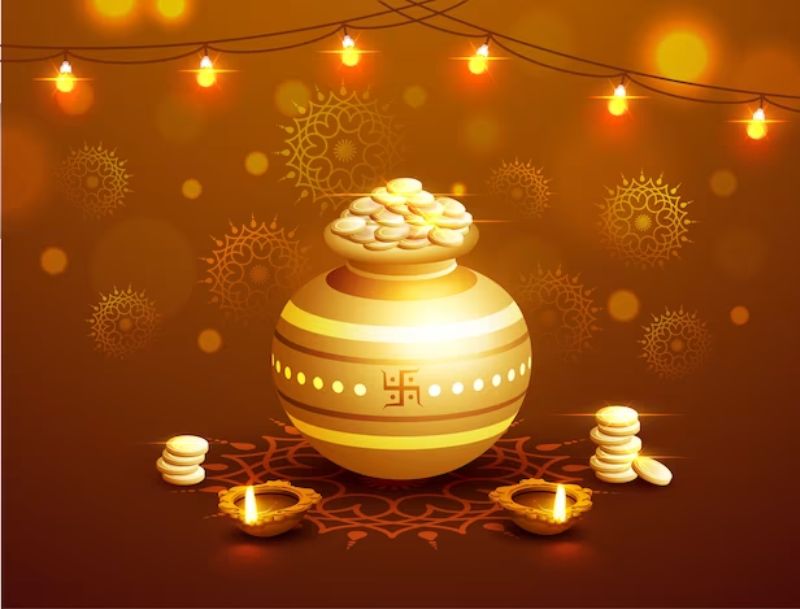
The first day of Diwali is known as ‘Dhanteras’ or ‘Dhantrayodashi’ which heralds the beginning of Diwali festivities. Dhanteras is a conflation of “Dhan,” meaning wealth, and “Teras,” meaning thirteen, the thirteenth lunar day of Krishna Paksha (dark fortnight). On this day, people worship Lord Dhanwantari, who is also associated with Ayurveda and various healing practices. In addition to that people buy utensils or jewellery or any other item for their home.
Dhanvantari Trayodashi
They also celebrate Dhanvantari Trayodashi on the same day when Dhanteras is observed. According to mythological texts, Deity Dhanvantari who rose from Samudra manthan carrying pot full of Amrita symbolizes god responsible for health and Ayurveda. The oceanic churning gave birth to him while he is considered as twelfth incarnation of Lord Vishnu among 14 Ratnas or parts emerged from it. On Dhanvantari Jayanti people worship him for their good health, longevity and welfare because he saved mankind from dangerous diseases.
31st October – Narak Chaturdashi
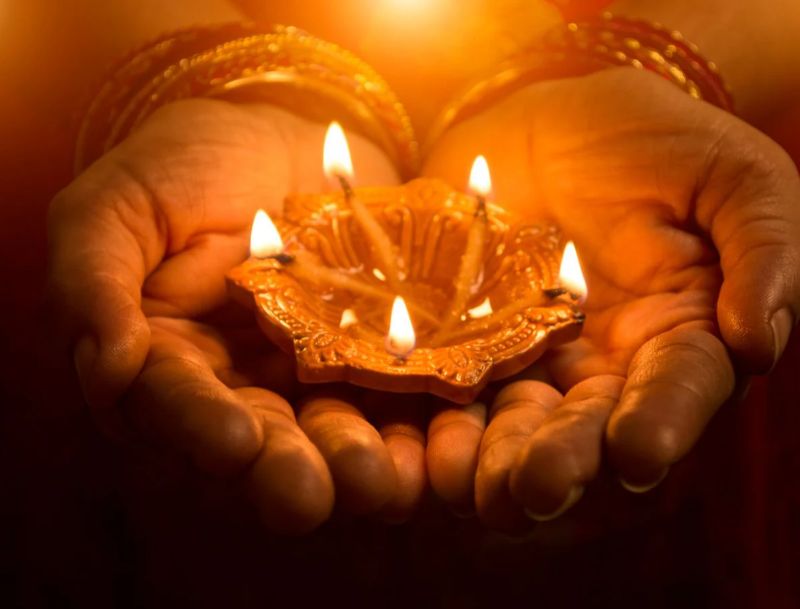
The second day of the festival is called Narak Chaturdashi during which Lord Krishna or Mahakali defeated a fierce demon named Naraksur. This day is also known as Kali Chaudas because on this special occasion people worship Mahakali or Shakti. It’s time for destruction of laziness and evil, which disturb human life on Earth in its time.
People light lamps on the day in fragrant oils, sandalwood and flowers are also used in this house that keeps the vibrations uplifted. In different parts of the country, you can find people making artistic patterns of ‘rangolis’ on the floor with coloured sand, powder, rice or flower petals.
On Diwali and Narak Chaturdashi it is often asked what oil is traditional when lighting lamps. We usually use mustard oil for lighting lamps whereas according to legend using cow ghee will draw attention of Lord Krishna as cows were his best friends!
1st November – Diwali Lakshmi Puja
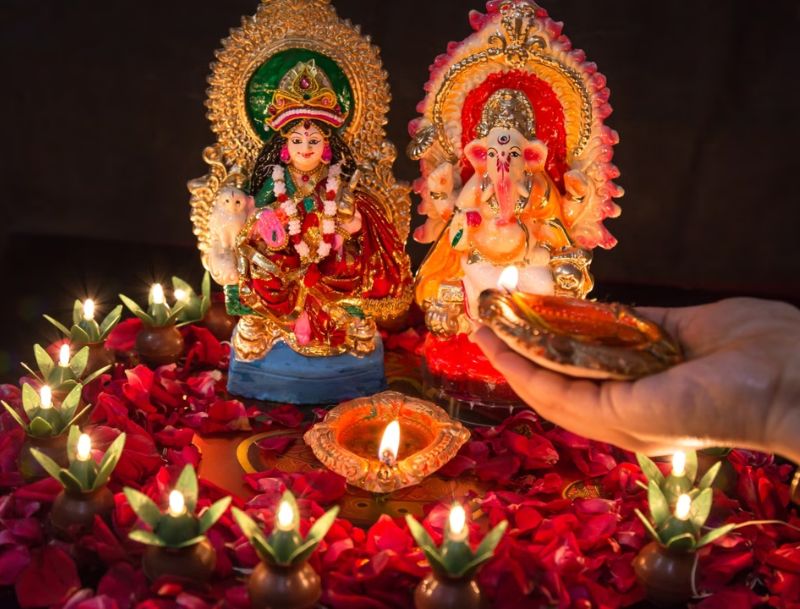
Thus, it is very important to perform Lakshmi Puja on day three of Diwali festival. The most vibrant day among the five days celebrated across India.
This day marks a grand celebration with lots of diyas or clay lamps lit at every corner of houses and shops, beautiful rangolis, and flowers decorating main entrance of houses and fireworks dotting the sky. During this occasion all family members worship Goddess Lakshmi along with Lord Ganesha and Goddess Saraswati who sits next to her. It leads to prasad distribution.
During Diwali children come together in their residential societies for group activities as they spend quality time with their families and friends. Various events are organized during Diwali. As such there are drawing competitions held during Diwali Festival. So that children may not get bored while grownups prepare themselves for puja.
Diwali is also considered one of the most auspicious days for traders & merchants families because they offer prayers to Goddess Saraswati who represents music literature wisdom & Kubera – lord of wealth. This also happens to be unofficial beginning date for new financial year for Indian Businessmen.
Some people love travelling places where they can find big celebrations during Diwali.
Diwali Puja Vidhi
This puja should be performed at right mahurat considering pradosh time and amavasya tithi. A comprehensive Diwali Puja involves following steps:
- First step involves performing Atma shodhan i.e self purification.
- Next taking water in your fist make Sankalpa that is promise to do all diwali puja rituals.
- Now you can chant Shantipath mantra for peace, prosperity etc in your own life.
- Mangal path comes next which fulfill every wish of family members. For Kalash sthapana take a coconut wrapped with a red cloth tied with sacred thread place it in a copper or earthern pot. After that Ganpati puja is done to bring blessings of Lord Ganesha. After this Nav Graha puja is performed to pacify all the nine planets.
- Afterward, as per the Lakshmi Puja mahurat, people start the worship of Goddess Lakshmi. The lamp remains lit up throughout night once Lakshmi Pujan is over.
- People read the Lakshmi Sukta and other Stutis of Goddess Lakshmi. Some even spend their whole night awake to receive her at home.
2nd November – Govardhan Pooja
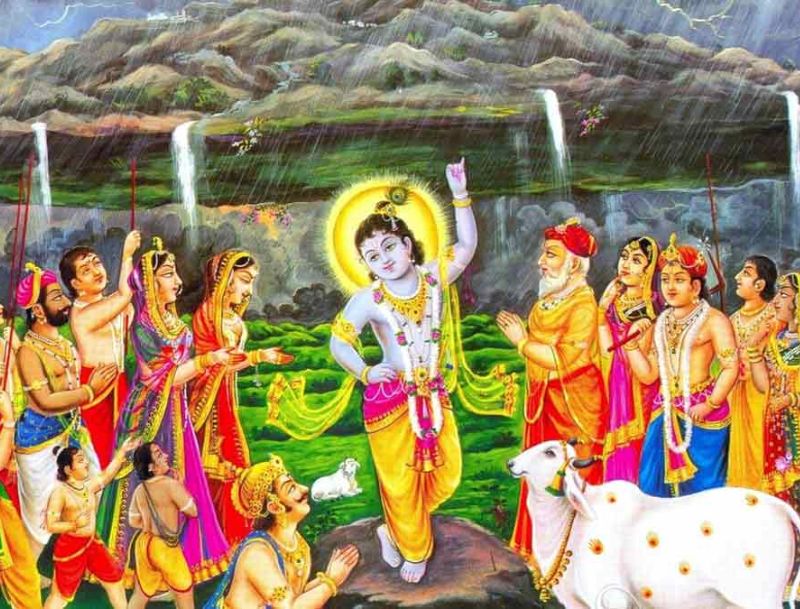
On the fourth day of this five-day Diwali festival, Govardhan Puja is performed. This day has a story associated with it. The story of Gokul when Lord Krishna saved the villagers from the wrath of Lord Indra by lifting the Govardhan mountain.
On 2nd November, devotees observe fast, worship and offer food and sweets to Lord Krishna along with cows and calves. People celebrate by visiting temples, wearing new clothes and jewellery and distributing sweets and gifts among friends and neighbours.
3rd November – Bhai Dooj
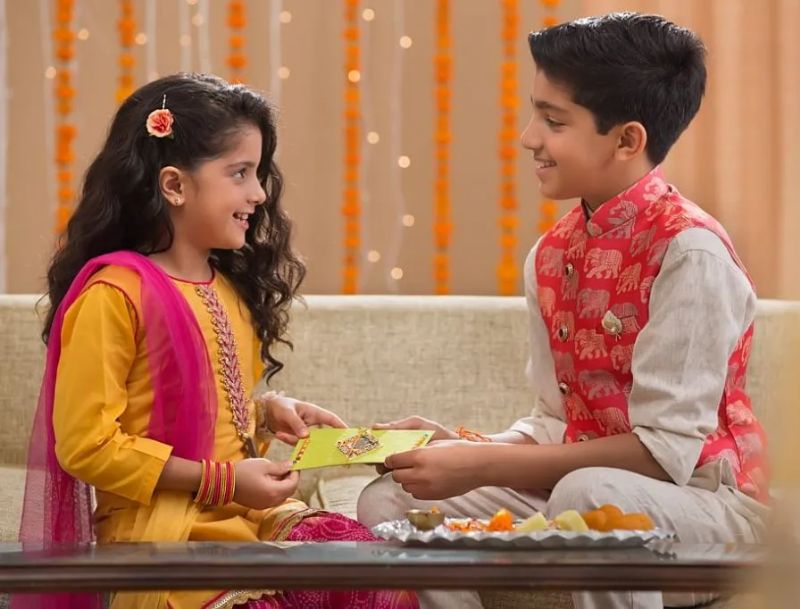
Bhai dooj is the fifth day of Diwali festival. This day solely cherishes love and trust between brother and sister. The historical incident of strong brotherly affection between Lord Yama and his sister Yami exists in this festival.
This day one observes a fast and aarti, applying “teeka”, consisting of rice and ‘kumkum’ to the forehead of his brother and sharing sweets. The sister prays for her brother’s life while the brother vows to protect his sister. All five days of the Diwali festival are celebrated in honour of human relationship. And they teach us virtues of truth, love, friendship, unity in all humans.
How to do Diwali Puja in 2024?
Diwali Puja is performed to get blessed by Goddess Lakshmi who symbolize wealth and prosperity and Lord Ganesh who is known as wisdom seeker and obstacle remover. Though different areas have varied customs during this period, some practices are common:
- House Cleaning: To draw Goddess Lakshmi, people believe that their houses should be kept clean as well as organized. Thus, for over a month before Diwali day itself homes will be cleaned up sometimes even repainting them.
- Puja Area Preparation: Many Hindu homes have a particular room set aside for worship which is usually cleaned thoroughly and decorated for the purpose of performing Lakshmi Puja. This can be done by arranging idols of Lord Ganesh and Goddess Lakshmi in this room.
- Decorating Homes: People decorate their dwellings with rangoli designs using colourful powder or flowers. They also erect posters having inscriptions like Shubh or Labh to make it welcoming.
- Puja Thali Preparations: The puja thali consists of flowers, bell, kumkum, agarbathi (incense sticks), rice grains (for offering), red thread plus prasad (sacred food). Another thali may carry diyas filled with mustard oil (a traditional fuel).
- Kalash Placement: A Kalash (holy pot) is filled with water topped off by coconut surrounded by leaves from the mango tree.
- Aarti Recital: To commence the puja, the Ganesh aarti is sung with clockwise movement of the puja thali and bell ringing. The Lakshmi aarti follows, after paying respects to Lord Ganesh in similar manner.
- Deity and Diya Worship: The deities are decorated with rice on their foreheads together with kumkum and thereafter flowers are put on them while prasad is offered. This also applies to diyas.
- Asking for Blessings and Celebration: Towards the end of the puja, blessings are sought from God Laxmi as well as Lord Ganesha. They used to place diya’s (lamps) around home outside areas and rangolis. It involves visiting family members, giving sweets, offering presents and those who wish can light eco-friendly firecrackers.
Diwali Festival 2024 Celebration in various parts of India-
On Diwali Festival 2024 people feel like bringing home joy, love and merriment. We would be so excited as children whenever Diwali celebration at school was mentioned. Uniforms would be thrown away as we adorned ourselves in colourful ethnic wear. Sometimes some of us dressed up like gods! In school Diwali celebration meant burning crackers, lighting lamps all over corners making Rangoli patterns and driving darkness away from one’s life.
Diwali these days is celebrated in a totally different way now; however dressing up by means of wearing sarees or kurta-pajama etc., lighting diyas for Lakshmipuja still remains an important part of this day but not bursting crackers that much due to environmental pollution concerns then will have minimal bursting of crackers or selective use green cracker option mostly preferred by many people around them instead – even though it seems odd when you think about it because isn’t our purpose supposed to celebrate?
North India
The North Indian cities of Ayodhya and Varanasi in Uttar Pradesh will celebrate the Diwali Festival 2024 with more enthusiasm and vibrancy than any other city in this region. This year, as is the case with every other one of them, it will be celebrated more enthusiastically and vibrantly at some places such as Ayodhya and Varanasi in Uttar Pradesh than in any other North Indian city. With the inauguration of Ram Mandir at Ayodhya in 2024. These are expected to see a surge of visitors from across the country who want to catch their fabulous Diwali processions. These popular tourist destinations along with others like Agra, Jaipur etc., attract a significant number of tourists every year.
They worship by taking part in the Ganga Maha Aarti. In Braj region of north India people say that Lord Krishna killed Narakasura on Diwali. Whereas Punjab celebrates Diwali which marks onset of winter season. Sikhs also observe ‘Bandi Chhor Divas’ on this day which is when Guru Hargobind- The sixth guru for Sikhs was released from imprisonment at Gwalior fort where he was being held captive due to his defiance against Emperor Jahangir’s policies towards Sikhs. The Golden Temple glows with thousands of oil lamps and langer (free food) and prasad are also organized for devotees.
East India
In West Bengal, East Indians especially dedicate their night during Diwali Festival 2024 to worship Kali avatar which symbolizes Goddess Durga as it coincides with Kali Puja.
In certain parts of old Kolkata, people decorate their houses with handmade paper lanterns and light up fourteen earthen clay lamps for homage to their ancestors. They eat ‘choddo shaak’ the previous day which is a seasonal mix of 14 leafy vegetables and medicinal plants. Pandal hopping is the term used for visiting the marquees housing the goddess Kali’s idols in neighbouring houses, in Odisha and West Bengal.
West India
Different parts of India celebrate Diwali festival 2024 differently. In Gujarat, several preparations are made for Lakshmi Puja i.e, the worship of Goddess Lakshmi. Diwali signifies end of Gujarati community’s traditional year. Subsequently, business starts for New Year on Labh Pancham which is fifth day after Diwali. The Diwali Festival 2024 celebration in Maharashtra begins with Vasu Baras. Like Dhanteras and Choti Diwali, Maharashtrians celebrate Dhantrayodashi and Narak Chaturdashi in their place too, worshipping Goddess Lakshmi as well as observing Diwali Cha Padva which commemorates marriage bond. This marks the conclusion of the festivities with Bhaav Bij that sees Tulsi Vivah or beginning of wedding season.
The colourful lanterns or Kandeels are among Mumbai’s biggest attractions during the Diwali Festival 2024 Celebration at Maharashtra area homes. Goa is unique when it comes to Narak Chaturdashi observances more than any other state in India. The effigies are usually paraded through streets before being burnt. There may even be contests to find out who makes the most imaginative effigy.
South India
Narak Chaturdashi (also known as Choti Diwali in North) is considered one of the most significant days in Southern states for celebrating this year’s Deepavali celebrations 2024. On this day, Tamil Nadu people start by taking an oil bath before dawn followed by numerous rituals like lighting up kuthi vilaku (lamp) and offering ‘naivedyam’ (food) to deities.
Kolam (rice powder mixed with chalk) is drawn in front of houses in South India. They also prepare a digestive Ayurvedic medicine called ‘lehyam’ for indigestion which people may suffer from as a result of these 5 days long festivities.
Conclusion
Over time, Diwali has become the most important festive season in India celebrated with passion and enthusiasm. Regardless of diverse ideologies and customs that occur during it, unity and light still apply. Let this Diwali bring out the best in you, and spread hope, light, positivity around. Thus keeping alive the spirit of happiness and ‘Dharm’.








Awesome! Its genuinely remarkable post, I have got much clear idea regarding from this post
naturally like your web site however you need to take a look at the spelling on several of your posts. A number of them are rife with spelling problems and I find it very bothersome to tell the truth on the other hand I will surely come again again.
This is my first time pay a quick visit at here and i am really happy to read everthing at one place